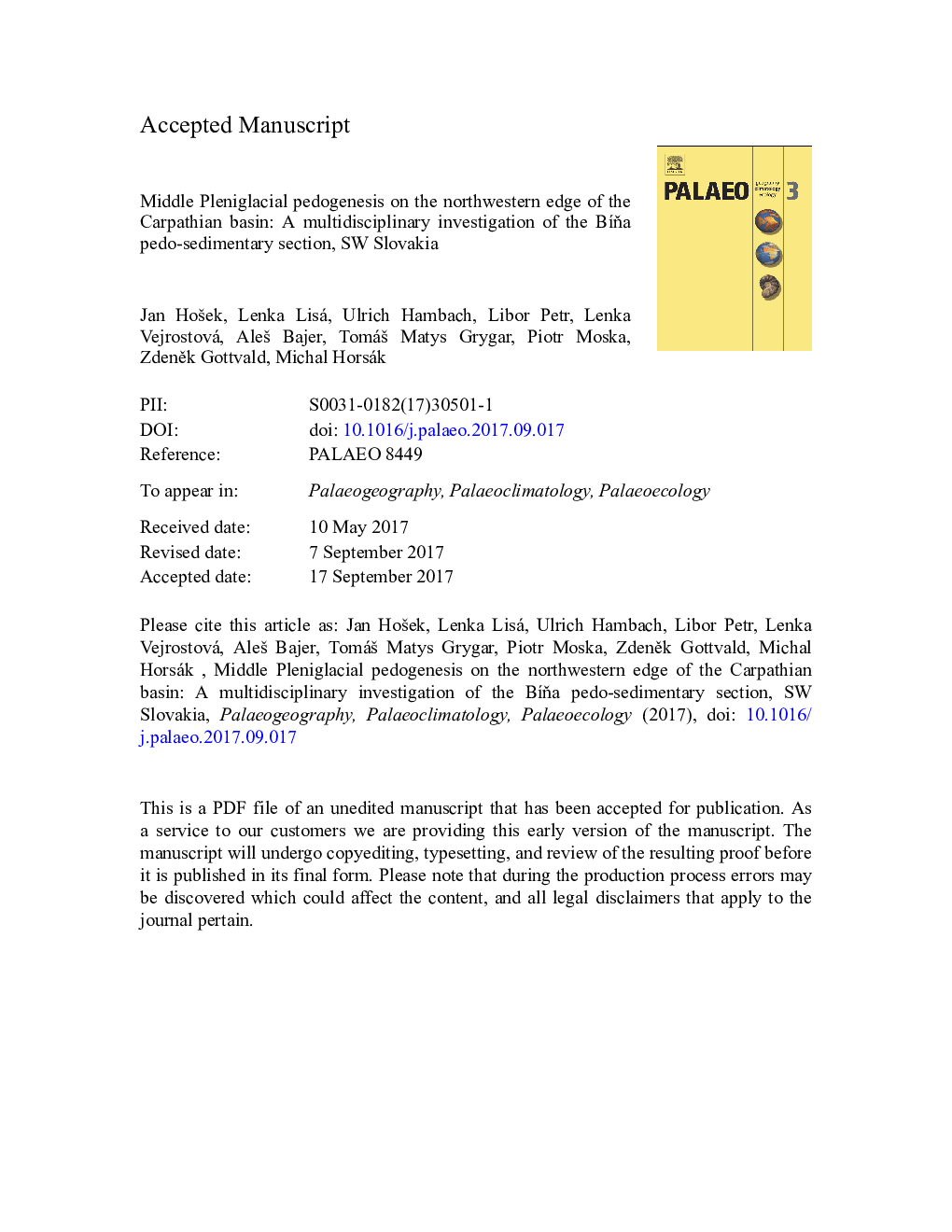| Article ID | Journal | Published Year | Pages | File Type |
|---|---|---|---|---|
| 8868589 | Palaeogeography, Palaeoclimatology, Palaeoecology | 2017 | 64 Pages |
Abstract
The Middle Pleniglacial on the northern hemisphere is characterized by millennial scale, frequent, and high amplitude environmental climatic shifts. In loess-paleosol sequences (LPSs) the transition from the Lower (MIS 4) to the Middle Pleniglacial (MIS 3) was accompanied by significant erosion events, as recorded in various terrestrial archives across Central Europe. As a result, potentially existing paleosol horizons of the particular period have been widely erased from the LPSs and only little is known about pedogenesis in this vast area. This study tries to fill this gap in our knowledge through studying a pedo-sedimentary record from BÃÅa, a site situated in a relatively poorly investigated area on the northwestern edge of the Carpathian Basin. We investigated a 12-m-high and more than 500-m-wide outcrop along the Hron River, where a well-structured sequence of fluvio-lacustrine sediments, paleosols, and loess is preserved. The paleoenvironmental development within the studied area is presented and discussed on the basis of soil micromorphology, rock-magnetic and geochemical measurements, grain size analyses, and a malacological record accomplished by luminescence dating. Based on the OSL dating of the central profile, the sequence provides a high resolution record of the time period 60-20Â ka (MIS 3-MIS 2). The most developed paleosol horizons (Phaeozem and two Bw horizons of Gleyic Cambisols) were dated to the early stage of the MIS 3 (60-50Â ka) and correlated with the Greenland interstadials GI-17/16, GI-14/13 and/or GI-12 (the northwestern European interstadials Oerel, Glinde and Moershoofd). The development of the Bw horizon of a Cambisol recorded within the younger loess body was dated to ca. 35Â ka and it probably corresponds to the late MIS 3 intestadials GI-8-5 (Denekamp). The preservation as well as the development of the well-stratified record were closely related to the specific hydro- and geomorphological settings of the paleo-channel structure in which the sequence developed. Although soil development benefited from the specific local settings, we suggest that the recorded paleosols can also be related to the interregional climate differences of the Carpathian Basin: within the northerly located pericarpathian zones, a moister climate predominated during the last Pleniglacial, in contrast to the drier continental areas to the South. Thus, a sharp climatic transition existed separating a semi-arid steppe region from a climatic zone under the persistent influence of Atlantic air masses.
Related Topics
Physical Sciences and Engineering
Earth and Planetary Sciences
Earth-Surface Processes
Authors
Jan HoÅ¡ek, Lenka Lisá, Ulrich Hambach, Libor Petr, Lenka Vejrostová, AleÅ¡ Bajer, TomáÅ¡ Matys Grygar, Piotr Moska, ZdenÄk Gottvald, Michal Horsák,
